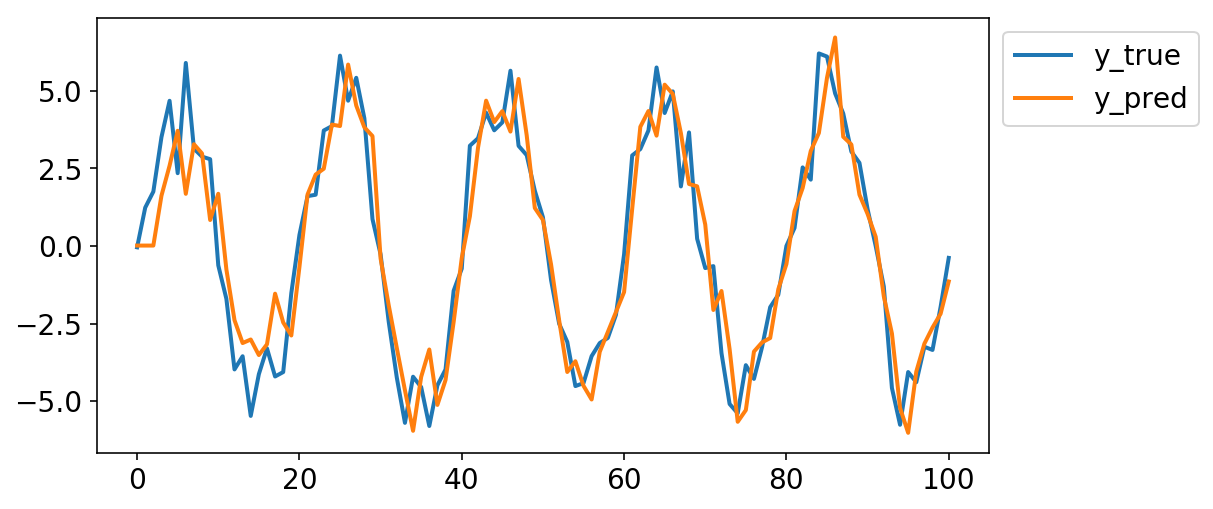EthanRosenthal / Skits
Programming Languages
Projects that are alternatives of or similar to Skits
skits
A library for SciKit-learn-Inspired Time Series models.
The primary goal of this library is to allow one to train time series prediction models using a similar API to scikit-learn. Consequently, similar to scikit-learn, this library consists of preprocessors, feature_extractors, and pipelines.
Installation
Install with pip:
pip install skits
Preprocessors
The preprocessors expect to receive time series data, and then end up storing some data about the time series such that they can fully invert a transform. The following example shows how to create a DifferenceTransformer transform data, and then invert it back to its original form. The DifferenceTransformer subtracts the point shifted by period away from each point.
import numpy as np
from skits.preprocessing import DifferenceTransformer
y = np.random.random(10)
# scikit-learn expects 2D design matrices,
# so we duplicate the time series.
X = y[:, np.newaxis]
dt = DifferenceTransformer(period=2)
Xt = dt.fit_transform(X,y)
X_inv = dt.inverse_transform(Xt)
assert np.allclose(X, X_inv)
Feature Extractors
After all preprocessing transformations are completed, multiple features may be built out of the time series. These can be built via feature extractors, which one should combine together into a large FeatureUnion. Current features include autoregressive, seasonal, and integrated features (covering the AR and I of ARIMA models).
Pipelines
There are two types of pipelines. The ForecasterPipeline is for forecasting time series (duh). Specifically, one should build this pipeline with a regressor as the final step such that one can make appropriate predictions. The functionality is similar to a regular scikit-learn pipeline. Differences include the addition of a forecast() method along with a to_scale keyword argument to predict() such that one can make sure that their prediction is on the same scale as the original data.
These classes are likely subject to change as they are fairly hacky right now. For example, one must transform both X and y for all transformations before the introduction of a DifferenceTransformer. While the pipeline handles this, one must prefix all of these transformations with pre_ in the step names.
Anywho, here's an example:
import numpy as np
from sklearn.linear_model import LinearRegression
from sklearn.preprocessing import StandardScaler
from sklearn.pipeline import FeatureUnion
from skits.pipeline import ForecasterPipeline
from skits.preprocessing import ReversibleImputer
from skits.feature_extraction import (AutoregressiveTransformer,
SeasonalTransformer)
steps = [
('pre_scaling', StandardScaler()),
('features', FeatureUnion([
('ar_transformer', AutoregressiveTransformer(num_lags=3)),
('seasonal_transformer', SeasonalTransformer(seasonal_period=20)
)])),
('post_features_imputer', ReversibleImputer()),
('regressor', LinearRegression(fit_intercept=False))
]
l = np.linspace(0, 1, 101)
y = 5*np.sin(2 * np.pi * 5 * l) + np.random.normal(0, 1, size=101)
X = y[:, np.newaxis]
pipeline = ForecasterPipeline(steps)
pipeline.fit(X, y)
y_pred = pipeline.predict(X, to_scale=True, refit=True)
And this ends up looking like:
import matplotlib.pyplot as plt
plt.plot(y, lw=2)
plt.plot(y_pred, lw=2)
plt.legend(['y_true', 'y_pred'], bbox_to_anchor=(1, 1));
And forecasting looks like
start_idx = 70
plt.plot(y, lw=2);
plt.plot(pipeline.forecast(y[:, np.newaxis], start_idx=start_idx), lw=2);
ax = plt.gca();
ylim = ax.get_ylim();
plt.plot((start_idx, start_idx), ylim, lw=4);
plt.ylim(ylim);
plt.legend(['y_true', 'y_pred', 'forecast start'], bbox_to_anchor=(1, 1));


